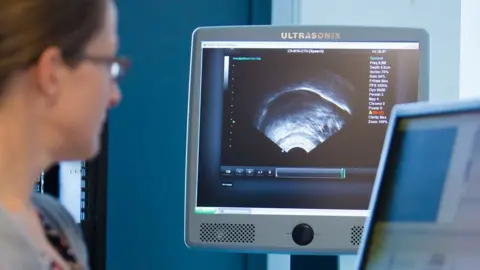New research reveals Gaelic speakers' tongue movements
 Lancaster University
Lancaster UniversityUltrasound recordings have been made of people speaking Gaelic to reveal how the tongue moves to produce the language's different sounds.
Gaelic has a large consonant system and some sounds - l, n and r - are each sounded three different ways.
The videos have been made available on a new website, Teangannan na Gàidhlig.
Researchers said the recordings could help people to learn Gaelic, and said they also shed new light on the "mechanics of bilingual speech".
The Gaelic speakers were also asked to speak in English, and researchers were interested to see which l, n and r sounds they used when doing that.
The three-year study led by Lancaster University was the first of its kind to use ultrasound - a technology best-known for monitoring unborn babies - to provide insights into spoken Gaelic.
Experts from the University of Glasgow and Queen Margaret University, Edinburgh, were also involved in the project.
The study involved Gaelic speakers on Lewis in the Western Isles.
Gaelic channel BBC Alba, BBC Radio nan Gàidheal, and islands local authority Comhairle nan Eilean Siar helped in collecting data.
Dr Claire Nance, of Lancaster University, said the videos could be used for educational purposes to show how tongue movement helped to make certain sounds.
She said: "These recordings give a fascinating view inside the mouth while people are speaking.
"It's really important to understand the details of Gaelic speech sounds so that we can support Gaelic learning and teaching and document the language."
